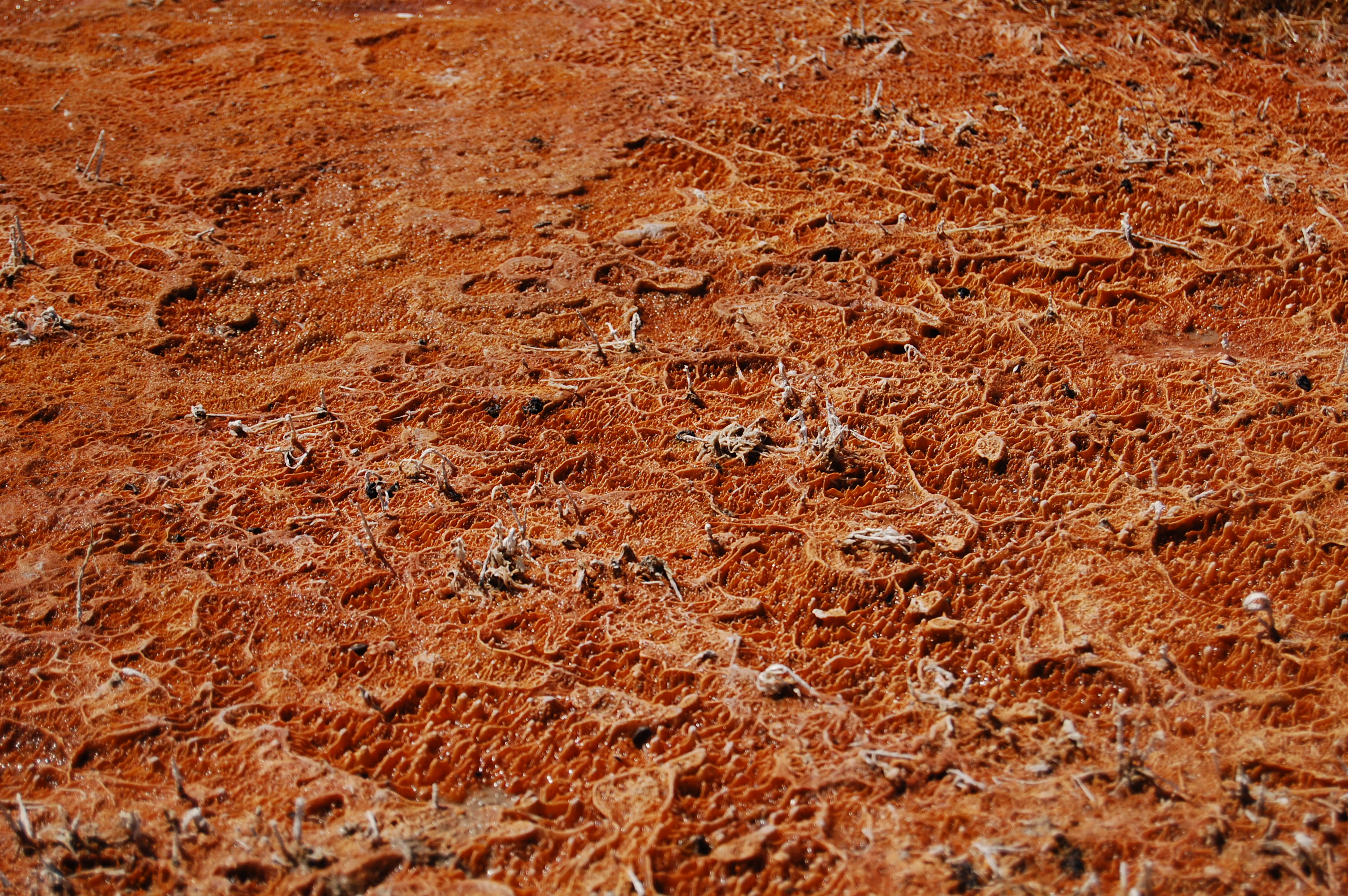|
Caldicoprobacter Oshimai
''Caldicoprobacter oshimai'' is a Gram-positive, extremely thermophilic, Anaerobic organism, anaerobic, xylanolytic and non-motile bacterium from the genus of ''Caldicoprobacter'' which has been isolated from faeces of sheep from the farm at the University of Georgia in the United States. References Eubacteriales Bacteria described in 2010 Thermophiles {{Firmicutes-stub ... [...More Info...] [...Related Items...] OR: [Wikipedia] [Google] [Baidu] |
Bacteria
Bacteria (; : bacterium) are ubiquitous, mostly free-living organisms often consisting of one Cell (biology), biological cell. They constitute a large domain (biology), domain of Prokaryote, prokaryotic microorganisms. Typically a few micrometres in length, bacteria were among the first life forms to appear on Earth, and are present in most of its habitats. Bacteria inhabit the air, soil, water, Hot spring, acidic hot springs, radioactive waste, and the deep biosphere of Earth's crust. Bacteria play a vital role in many stages of the nutrient cycle by recycling nutrients and the nitrogen fixation, fixation of nitrogen from the Earth's atmosphere, atmosphere. The nutrient cycle includes the decomposition of cadaver, dead bodies; bacteria are responsible for the putrefaction stage in this process. In the biological communities surrounding hydrothermal vents and cold seeps, extremophile bacteria provide the nutrients needed to sustain life by converting dissolved compounds, suc ... [...More Info...] [...Related Items...] OR: [Wikipedia] [Google] [Baidu] |
Bacillota
The Bacillota (synonym Firmicutes) are a phylum of bacteria, most of which have Gram-positive cell wall structure. They have round cells, called cocci (singular coccus), or rod-like forms (bacillus). A few Bacillota, such as '' Megasphaera'', '' Pectinatus'', '' Selenomonas'', and '' Zymophilus'' from the class Negativicutes, have a porous pseudo-outer membrane that causes them to stain Gram-negative. Many Bacillota produce endospores, which are resistant to desiccation and can survive extreme conditions. They are found in various environments, and the group includes some notable pathogens. Those in one family, the Heliobacteria, produce energy through anoxygenic photosynthesis. Bacillota play an important role in beer, wine, and cider spoilage. Taxonomy The renaming of phyla such as Firmicutes in 2021 remains controversial among microbiologists, many of whom continue to use the earlier names of long standing in the literature. The name "Firmicutes" was derived from the ... [...More Info...] [...Related Items...] OR: [Wikipedia] [Google] [Baidu] |
Clostridia
The Clostridia are a highly polyphyletic class of Bacillota, including '' Clostridium'' and other similar genera. They are distinguished from the Bacilli by lacking aerobic respiration. They are obligate anaerobes and oxygen is toxic to them. Species of the class Clostridia are often but not always Gram-positive (see '' Halanaerobium'') and have the ability to form spores. Studies show they are not a monophyletic group, and their relationships are not entirely certain. Currently, most are placed in a single order called Clostridiales, but this is not a natural group and is likely to be redefined in the future. Most species of the genus ''Clostridium'' are saprophytic organisms that ferment plant polysaccharides and are found in many places in the environment, most notably the soil. However, the genus does contain some human pathogens (outlined below). The toxins produced by certain members of the genus ''Clostridium'' are among the most dangerous known. Examples are tetan ... [...More Info...] [...Related Items...] OR: [Wikipedia] [Google] [Baidu] |
Clostridiales
The Eubacteriales are an order of bacteria placed within the class Clostridia. Phylogeny The currently accepted taxonomy is based on the List of Prokaryotic names with Standing in Nomenclature (LPSN) and National Center for Biotechnology Information (NCBI) External phylogeny Unassigned families: * " Betainaceae" Jones et al. 2019 * " Darwinibacteraceae" Puchol-Royo et al. 2023 * " Wallacebacteraceae" Puchol-Royo et al. 2023 See also * List of bacterial orders * List of bacteria genera This article lists the genera of the bacteria Bacteria (; : bacterium) are ubiquitous, mostly free-living organisms often consisting of one Cell (biology), biological cell. They constitute a large domain (biology), domain of Prokaryote, ... References Bacteria orders Long stubs with short prose {{clostridia-stub ... [...More Info...] [...Related Items...] OR: [Wikipedia] [Google] [Baidu] |
Caldicoprobacter
''Caldicoprobacter'' is a genus of bacteria from the family of Caldicoprobacteraceae. Phylogeny The currently accepted taxonomy is based on the List of Prokaryotic names with Standing in Nomenclature (LPSN) and National Center for Biotechnology Information (NCBI) See also * List of bacterial orders * List of bacteria genera References Further reading * * * Eubacteriales Bacteria genera Bacillota {{Firmicutes-stub ... [...More Info...] [...Related Items...] OR: [Wikipedia] [Google] [Baidu] |
LPSN
List of Prokaryotic names with Standing in Nomenclature (LPSN) is an online database that maintains information on the naming and taxonomy image:Hierarchical clustering diagram.png, 280px, Generalized scheme of taxonomy Taxonomy is a practice and science concerned with classification or categorization. Typically, there are two parts to it: the development of an underlying scheme o ... of prokaryotes, following the taxonomy requirements and rulings of the International Code of Nomenclature of Prokaryotes. The database was curated from 1997 to June 2013 by Jean P. Euzéby. From July 2013 to January 2020, LPSN was curated by Aidan C. Parte. In February 2020, a new version of LPSN was published as a service of the Leibniz Institute DSMZ, thereby also integrating the Prokaryotic Nomenclature Up-to-date service and since 2022 LPSN is interconnected with the Type (Strain) Genome Server (TYGS), DSMZ's high-throughput platform for accurate genome-based taxonomy. See also * Code o ... [...More Info...] [...Related Items...] OR: [Wikipedia] [Google] [Baidu] |
Gram-positive
In bacteriology, gram-positive bacteria are bacteria that give a positive result in the Gram stain test, which is traditionally used to quickly classify bacteria into two broad categories according to their type of cell wall. The Gram stain is used by microbiologists to place bacteria into two main categories, gram-positive (+) and gram-negative bacteria, gram-negative (−). Gram-positive bacteria have a thick layer of peptidoglycan within the cell wall, and gram-negative bacteria have a thin layer of peptidoglycan. Gram-positive bacteria retain the crystal violet stain used in the test, resulting in a purple color when observed through an optical microscope. The thick layer of peptidoglycan in the bacterial cell wall retains the Stain (biology), stain after it has been fixed in place by iodine. During the decolorization step, the decolorizer removes crystal violet from all other cells. Conversely, gram-negative bacteria cannot retain the violet stain after the decolorization ... [...More Info...] [...Related Items...] OR: [Wikipedia] [Google] [Baidu] |
Thermophilic
A thermophile is a type of extremophile that thrives at relatively high temperatures, between . Many thermophiles are archaea, though some of them are bacteria and fungi. Thermophilic eubacteria are suggested to have been among the earliest bacteria. Thermophiles are found in geothermally heated regions of the Earth, such as hot springs like those in Yellowstone National Park and deep sea hydrothermal vents, as well as decaying plant matter, such as peat bogs and compost. They can survive at high temperatures, whereas other bacteria or archaea would be damaged and sometimes killed if exposed to the same temperatures. The enzymes in thermophiles function at high temperatures. Some of these enzymes are used in molecular biology, for example the ''Taq'' polymerase used in PCR. "Thermophile" is derived from the (''thermotita''), meaning heat, and (''philia''), love. Comparative surveys suggest that thermophile diversity is principally driven by pH, not temperature. Clas ... [...More Info...] [...Related Items...] OR: [Wikipedia] [Google] [Baidu] |
Anaerobic Organism
An anaerobic organism or anaerobe is any organism that does not require oxygen, molecular oxygen for growth. It may react negatively or even die if free oxygen is present. In contrast, an aerobic organism (aerobe) is an organism that requires an oxygenated environment. Anaerobes may be unicellular (e.g. protozoans, bacteria) or multicellular. Most fungi are obligate aerobes, requiring oxygen to survive. However, some species, such as the Chytridiomycota that reside in the rumen of cattle, are obligate anaerobes; for these species, anaerobic respiration is used because oxygen will disrupt their metabolism or kill them. The sea floor is possibly one of the largest accumulation of anaerobic organisms on Earth, where microbes are primarily concentrated around Hydrothermal_vent, hydrothermal vents. These microbes produce energy in absence of sunlight or oxygen through a process called chemosynthesis, whereby inorganic compounds such as hydrogen gas, hydrogen sulfide or ferrous ions are ... [...More Info...] [...Related Items...] OR: [Wikipedia] [Google] [Baidu] |
University Of Georgia
The University of Georgia (UGA or Georgia) is a Public university, public Land-grant university, land-grant research university with its main campus in Athens, Georgia, United States. Chartered in 1785, it is the oldest public university in the United States. It is the flagship university, flagship school of the University System of Georgia. In addition to the main campuses in Athens with their approximately 470 buildings, the university has two smaller campuses located in Tifton, Georgia, Tifton and Griffin, Georgia, Griffin. The university has two satellite campuses located in Atlanta, Georgia, Atlanta and Lawrenceville, Georgia, Lawrenceville, and residential and educational centers in Washington, D.C., at Trinity College, Oxford, Trinity College of University of Oxford, Oxford University, and in Cortona, Italy. The total acreage of the university in 30 List of counties in Georgia (U.S. state), Georgia counties is . The university is Carnegie Classification of Institutions ... [...More Info...] [...Related Items...] OR: [Wikipedia] [Google] [Baidu] |




